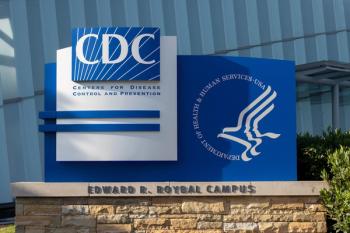
Physician Practice Transactions with Private Equity: Don’t Forget About the Real Estate!
Physician-owned real estate can be a major factor in the overall value of a private equity deal.
The number of physician practices transacting with private equity in recent years has increased year-over-year in the last five years, with 2021 being on record as the year with the highest number of deals in this sector. Low interest rates and high valuations drove many physician groups to sell their medical practices, often with very little consideration about the real estate that the practices are located in, much of which is also owned by the physicians. This article explains why physician practices that are contemplating a transaction with private equity should pay special attention to the real estate assets and not only the medical practice assets.
Background
Many physicians still own the real estate assets that serve their medical practice. Medical office and surgery center real estate holds significant value, not only because they are the location where patient care is provided, but also as investments. However, transitioning towards a sale of the medical practice is likely to change the objectives for these holdings, or at least spark a discussion.
While the traditional model of associate physicians systematically buying out the interests of senior partners as they retire has worked for many decades, health care remains dynamic, requiring constant recalibration.Not only does this apply to a medical practice or an ambulatory surgery center, but also the real estate where these businesses operate from, often resulting in questions like:
- How will the physicians eventually get their capital out of the building?
- Are associate physicians able/willing to shoulder the debt/payment of buying into the real estate?
- How does a private equity sale affect the physicians’ property holdings?
Questions 1 and 2 are situational and highly dependent on partnership composition. Generally speaking, as gleaned through discussion and consultation with hundreds of specialty physician groups nationwide, the consensus seems to be that younger physicians are more risk averse.Maybe they’re laden with debt from medical school, seeking a better work-life balance, or just don’t like the idea of investing in a dated building. How do their choices affect the senior partners’ real estate exit strategy?
For the balance of this article, we’ll focus on Question 3 above, which is more objective and preparatory in nature. If a physician group is exploring a private equity transaction, it’s critical to also have consideration for how real estate fits into the equation.It’s almost always the case that a practice sale will generate more total value, but real estate is second, and nothing to scoff at.
How does a private equity sale affect our property holdings?
Most physician groups bought or built their real estate to control the destiny of their practice; as owner-occupants, they can dictate their own rent and lease terms. Contrary to the “location, location, location” assumption, rent and lease terms are the primary drivers of value in medical real estate. Let’s not forget that this is not a truly arm’s length arrangement; rent is simply paid from one pocket to the other (practice entity to real estate entity). At any point in their ownership cycle, a physician group can increase or decrease the value of their building by adjusting the rent they pay to themselves. All of that will change as part of a private equity transaction.
Now, rent will be paid from the private equity backed practice to the physician-owned real estate entity. It’s typical that a new lease will be struck as part of the deal, formalizing the landlord-tenant relationship, along with the responsibilities of the two parties. At the same time, the property value becomes fixed and is highly dependent on the terms of the new lease that has been negotiated. Proper lease structuring during a private equity transaction is paramount to preserve and maximize (or, at least, not impair) real estate value. This can be achieved with basic preparation and little to no impact on practice valuation.
So what goes into maximizing property value?Thoughtful lease structuring, including the following:
- Fair Market Rent - Can be established through a review of market comparables or by engaging a real estate advisor specializing in health care properties. Medical assets are different than other real estate, so extra care must be taken to identify properties that are actually comparable.
- Long Term Lease - A minimum of 10 years, but 12 or 15 years is ideal, serving to create a secure stream of rental income for the foreseeable future.
- Annual Rental Increases - Typically in the range of 2-3% per year, with exceptions in inflationary periods where annual growth in the CPI exceeds the fixed increases.
- NNN Terms - In addition to base rent, the practice/tenant should also responsible for paying property taxes, insurance, building maintenance, repairs, and replacements.
- Corporate Guarantee - Instead of maintaining the practice as the tenant entity, the landlord benefits from having the larger corporate entity (i.e., the private-equity backed platform) as the tenant or a guarantor of the lease.
In addition to the financial considerations, there are also legal and tax implications to consider when it comes to structuring a lease during a private equity transaction. It's important to work with experienced legal and tax advisors to ensure that the lease is structured in a way that maximizes value while also complying with relevant regulations (including, if applicable federal and state fraud and abuse laws governing physicians) and minimizing tax liabilities.
So why is it so important to properly structure a group’s lease as part of a private equity transaction?The reason is because once the deal is closed and the lease is executed, it’s difficult to negotiate and change the terms afterwards. In addition, it makes financial sense to restructure the lease before a private equity transaction because the numbers are attractive too because while we all can agree that real estate has some intrinsic value, property valuations are different compared to medical practice valuations. As the diagram below outlines, medical practices are valued as a multiple of EBITDA whereas real estate is valued as a multiple of rent.Generally speaking, with the exception of very large practices, multiples on real estate are almost always higher.As a result, restructuring the lease as part of the private equity transaction is a worthwhile endeavor.Whether you plan to sell your practice real estate immediately or not, a well-crafted lease ensures you have the optionality to do so at some point in the future.
Another important consideration is the impact of the lease structure on potential buyers. If a physician group decides to sell their practice and real estate in the future, a well-structured lease can make the property more attractive to potential buyers. Buyers will be more willing to pay a premium for a property with a long-term lease and stable rental income. This can ultimately result in a higher sales price for the property.
In conclusion, a private equity transaction can significantly impact the value of physician-owned real estate, making it critical to properly structure lease agreements. By working with experienced advisors and taking the time to develop a well-crafted lease, physician groups can maximize the value of their real estate holdings and ensure that they are well-positioned for the future.
Newsletter
Stay informed and empowered with Medical Economics enewsletter, delivering expert insights, financial strategies, practice management tips and technology trends — tailored for today’s physicians.

















